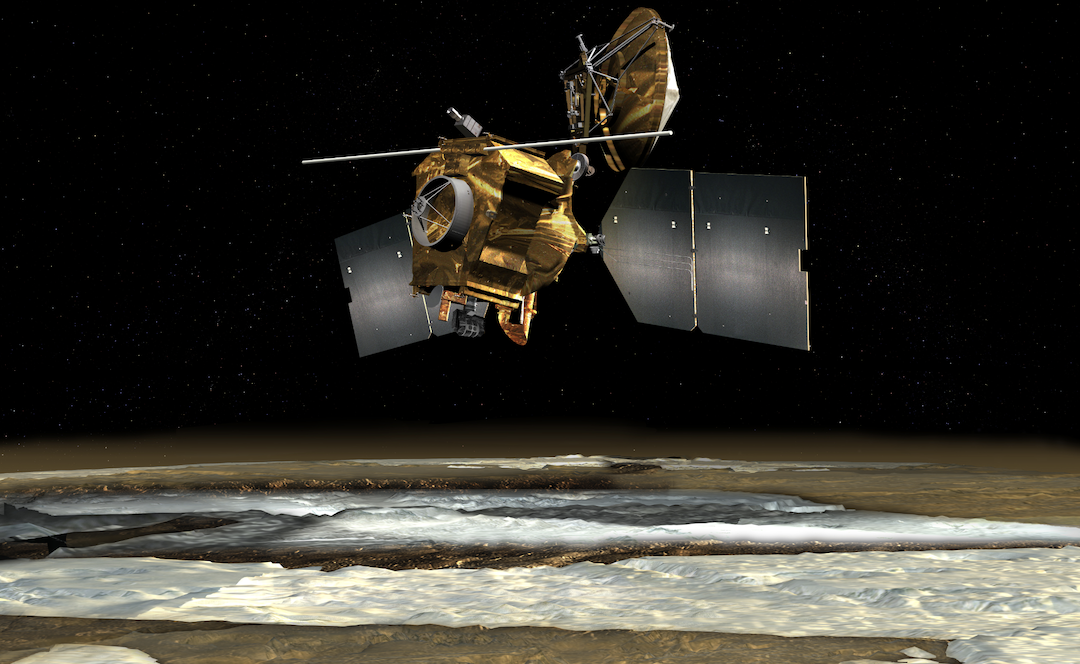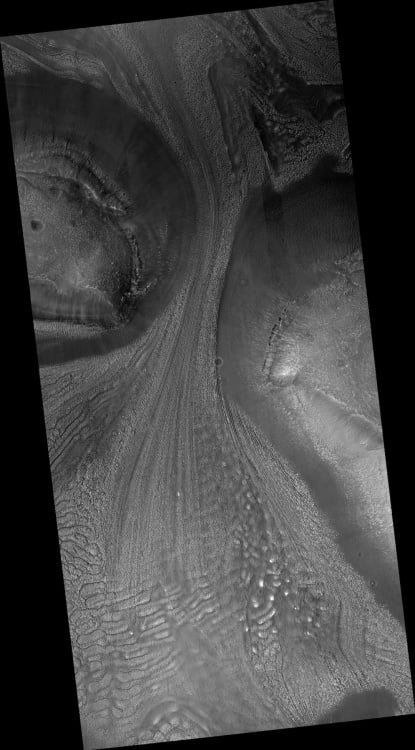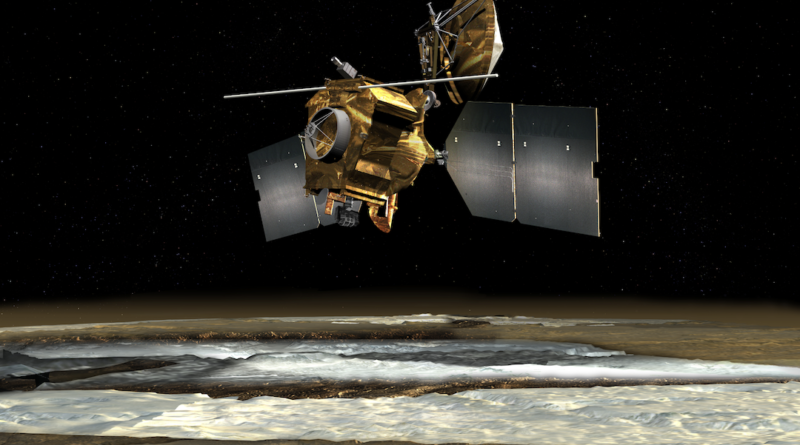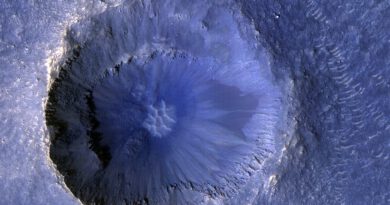NASA spacecraft spots stunning flow of ice on Mars

Mars, a world that once gushed with water, is today 1,000 times drier than Earth’s driest desert. Yet some ice still flows, slowly, on the Martian ground.
NASA‘s Mars-orbiting satellite, the Mars Reconnaissance Orbiter, carries a powerful camera called the High Resolution Imaging Experiment (HiRISE) that captures rich imagery of the Red Planet’s surface (it’s the “most powerful camera ever sent to another planet,” the HiRISE team explains). Recently, planetary scientists used HiRISE to snap an image of a glacier-like “icy flow,” taken from 184 miles above Mars’ surface. Frozen ice doesn’t only exist in the frigid Martian poles.
“The surface of Mars is littered with examples of glacier-like landforms,” Mike Mellon, a Mars geologist and co–investigator of the HiRISE project, explained online. “While surface ice deposits are mostly limited to the polar caps, patterns of slow, viscous flow abound in many non-polar regions of Mars.”
The image below was taken at 37 latitude, a “temperate” region of Mars.

Want more science and tech news delivered straight to your inbox? Sign up for Mashable’s Light Speed newsletter today.
Ice flow on Mars
This ice is moving slowly. It tends to form on rocky debris inside valleys and craters.
“As ice flows downhill, rock and soil are plucked from the surrounding landscape and ferried along the flowing ice surface and within the icy subsurface,” Mellon explained. “While this process is gradual, taking perhaps thousands of years or longer, it creates a network of linear patterns that reveal the history of ice flow.”
Even when the ice melts or evaporates away, the rock flows remain, leaving telltale signs of Mars’ diminished, but still active, geologic activity.
Still, this ice is a far cry from Mars’ days as a water world, when lakes sprawled over the land and streams ran through river deltas. Today, NASA’s Perseverance rover is scouring the river delta in Mars’ Jezero Crater for possible hints of past, primitive life — should any have ever existed.


